Global Forecast 2025-2032: Flexible LED Panel Market Outlook & Modular Display Trends
The Shape of the Future is Flexible
As the global demand for dynamic visual solutions grows, the flexible LED panel market is becoming a cornerstone of display innovation. Between 2025 and 2032, this sector is expected to witness robust expansion, driven by technological breakthroughs, modular design evolution, and increased demand for immersive user experiences. According to MarketsandMarkets and Allied Market Research, the global flexible LED panel market will maintain a compound annual growth rate (CAGR) of approximately 11.8%, reflecting high adaptability across multiple industries. At Madder, we explore the trends powering this transformation and how modular LED displays shape tomorrow’s visual infrastructure.
Flexible LED Panel Market Forecast: Exponential Growth Trajectory
Industry projections indicate that by 2032, the global flexible LED display market could surpass USD 9.7 billion in value. The growth is driven by rising applications in commercial advertising, public transportation, entertainment venues, smart cities, and retail environments.
Furthermore, smart home integrations and wearable devices are increasingly incorporating flexible LED components, boosting the demand for lightweight and energy-efficient panels. With technological advances reducing pixel pitch and improving bend radius, these panels now offer unmatched clarity and design freedom.
CAGR Highlights and Regional Market Dynamics
From 2025 through 2032, North America and the Asia-Pacific will remain the primary growth regions. North America, led by the U.S. and Canada, is expected to grow at a CAGR exceeding 10%, fueled by smart building initiatives and digital signage expansion. Meanwhile, the Asia-Pacific region will continue leading production and consumption, driven by China’s manufacturing dominance and South Korea’s innovation in AMOLED and mini-LED tech.
Europe follows closely, with increasing government investment in urban beautification and stadium modernization. Germany, France, and the UK are key players, with growing adoption of modular LED display systems in transport and retail.
Modular Design: A Revolution in Flexibility
Traditional fixed-frame displays are giving way to modular flexible LED systems that adapt to curved, cylindrical, and even foldable installations. This design evolution allows seamless customization for:
- Stadium wraps and advertising pillars
- Curved indoor retail walls
- Wearable LED tech and automotive dashboards
Madder is at the forefront of this movement, offering bendable LED modules with magnetic fasteners, ultra-thin substrates, and plug-and-play wiring to reduce installation time and labor costs. Our modular flexible LED panels are IP-rated and tested for continuous usage in high-traffic environments.
Materials and Sustainability: Toward Greener Illumination
With climate concerns rising, the flexible LED industry is prioritizing eco-conscious materials and energy efficiency. Organic LEDs (OLEDs), recyclable PCBs, and low-heat emission materials are becoming standard. According to a 2024 report from the Sustainable Display Alliance, nearly 52% of manufacturers plan to transition to fully recyclable displays by 2030.
Madder integrates recyclable circuit boards and RoHS-compliant materials into our panel architecture. Additionally, our LED control systems use smart dimming to lower energy consumption during off-peak hours, supporting clients’ ESG goals.
Use Cases Driving Market Demand
Flexible LED panels are increasingly used across:
- Smart Retail: Dynamic product walls that adapt to changing inventory
- Entertainment and Events: Stage backdrops and immersive concert visuals
- Automotive Displays: Curved dashboard screens with real-time navigation
- Healthcare and Education: Informational signage in curved hallways or lobbies
These use cases demonstrate the commercial need for flexible LED panels that merge reliability, versatility, and vivid display quality.
Competitive Landscape and Technological Edge
Major players such as LG Display, Samsung Electronics, Leyard, and Madder are continuously improving pixel density, refresh rates, and power efficiency. Flexible LED panel innovations now include:
- Micro-LED integration
- Transparent OLED layering
- Flexible PCB substrates
At Madder, we blend R&D, ergonomic engineering, and customer collaboration to deliver display solutions tailored to next-gen visual environments.
Future Outlook: Challenges and Strategic Opportunities
Despite impressive growth, the flexible LED market faces hurdles such as high initial costs, durability concerns in outdoor settings, and complex repair protocols. However, ongoing material science advancements and AI-driven maintenance tools are resolving these issues.
From 2025 onward, opportunities lie in:
- AI-integrated LED signage
- Augmented reality-compatible LED canvases
- Ultra-flexible educational display modules
Madder is investing in smart controller chipsets and nanomaterial substrates to stay ahead of these trends.
Conclusion: Flexibility Shapes the Future of Displays
From urban architecture to personal gadgets, flexible LED panels are transforming how we interact with digital content. Their growth from 2025 to 2032 will reflect global demand for immersive, adaptable, and sustainable display solutions.
At Madder, we believe modular flexible LED panels are not just products—they’re platforms for creativity and innovation. As the market surges forward, our commitment is to deliver durable, eco-friendly, and user-centric displays for every industry need.
Stay tuned. Stay flexible. Partner with Madder.


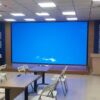
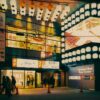
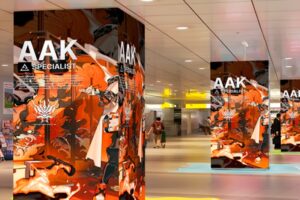
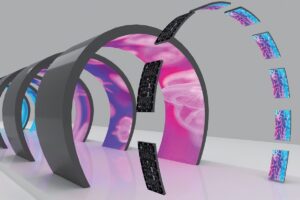
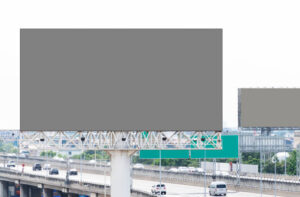


Leave a reply